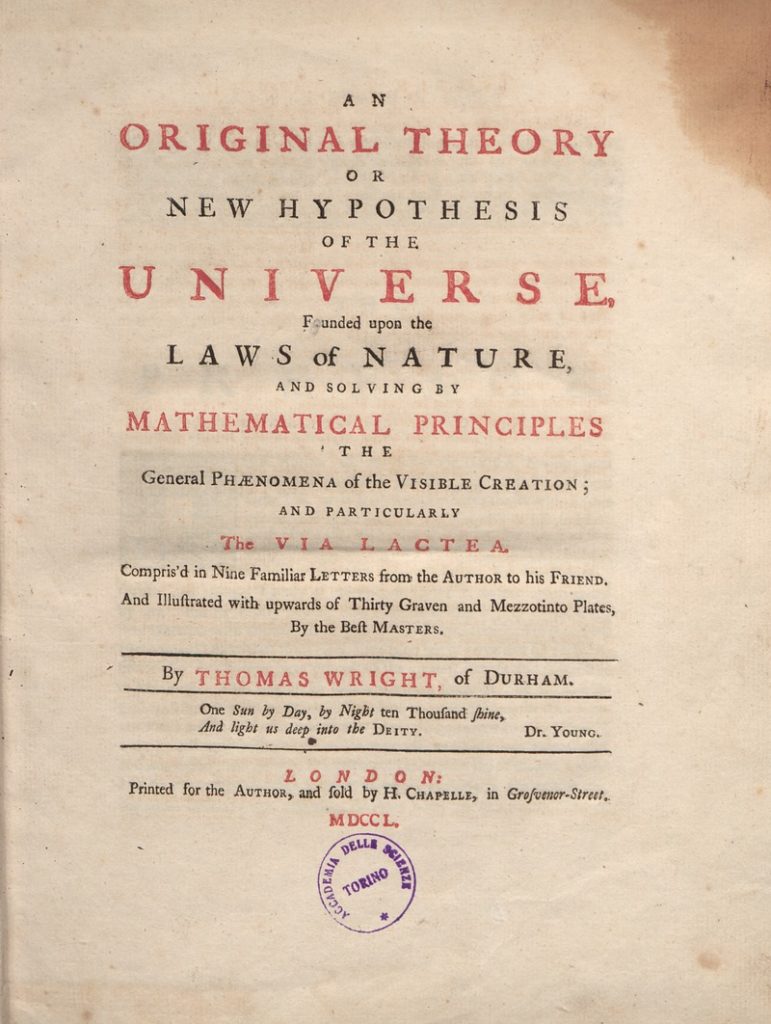
Leila Belkora’s Minding the Heavens; a great book for an historic overview on the discovery of the Milky Way. The opening chapter introduced me to Thomas Wright who’s creative deductions reasoned that we are embedded within the body of stars known as the Milky Way. He also considered the infinity of the universe and the idea that nebulae may exist beyond our own galaxy and be Galaxies in their own right.
Wright’s publication An original theory or new hypothesis of the Universe (1750) explained the appearance of the Milky Way as “an optical effect due to our immersion in what locally approximates to a flat layer of stars.”[4] This work influenced Immanuel Kant in writing his Universal Natural History and Theory of the Heavens (1755).[5] The theory was later empirically advanced by William Herschel in 1785,[6] leading to galactocentrism (a form of heliocentrism, with the Sun at the center of the Milky Way). Another of Wright’s ideas, which is also often attributed to Kant, was that many faint nebulæ are actually incredibly distant galaxies. Wright wrote:[7][8]
…the many cloudy spots, just perceivable by us, as far without our Starry regions, in which tho’ visibly luminous spaces, no one star or particular constituent body can possibly be distinguished; those in all likelihood may be external creation, bordering upon the known one, too remote for even our telescopes to reach.
Kant termed these “island universes.” However “scientific arguments were marshalled against such a possibility,” and this view was rejected by almost all scientists until 1924, when Edwin Hubble showed “spiral nebulæ” were distant galaxies by measuring Cepheids.[9]
In his letters, Wright emphasised the possible enormity of the universe, and the tranquility of eternity:[10]
In this great Celestial Creation, the Catastrophy of a World, such as ours, or even the total Dissolution of a System of Worlds, may possibly be no more to the great Author of Nature, than the most common Accident in Life with us, and in all Probability such final and general DoomsDays may be as frequent there, as even Birth-Days or Mortality with us upon this Earth.
…
Such a Prothesis can scarce be called less than an ocular Revelation, not only shewing us how reasonable it is to expect a future Life, but as it were, pointing out to us the Business of an Eternity, and what we may with the greatest Confidence expect from the eternal Providence, dignifying our Natures with something analogous to the Knowledge we attribute to Angels; from whence we ought to despise all the Vicissitudes of adverse Fortune, which make so many narrow-minded Mortals miserable
All images below sourced here
































